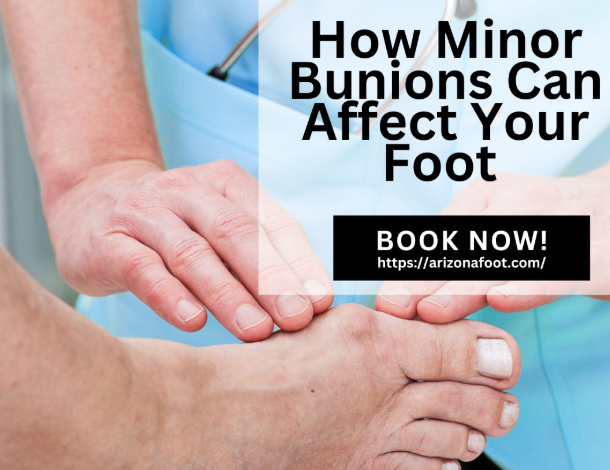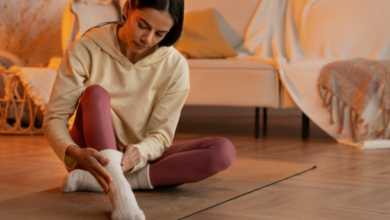How Minor Bunions Can Affect Your Foot and What to Do About Them

Introduction
Foot health is often overlooked until discomfort or pain starts interfering with daily life. One common condition that can affect your mobility and comfort is the minor bunion. Even though minor bunions may not seem serious at first, ignoring them can lead to discomfort, changes in gait, and other foot problems over time.
In this article, we’ll explore how minor bunions affect your foot, what causes them, common symptoms, treatment options, and preventive measures. Whether you spend long hours standing, love running, or just want to keep your feet healthy, this guide will help you understand and manage minor bunions effectively.
What Are Minor Bunions?
A bunion, medically known as hallux valgus, is a bony bump that forms at the base of the big toe. In minor bunions, the bump is small and the misalignment of the toe is not severe. Despite being “minor,” these bunions can still cause pain, irritation, and difficulties in choosing appropriate footwear.
Minor bunions are often progressive. If left untreated, they may develop into more severe deformities, making walking or running uncomfortable and increasing the risk of other foot issues.
Causes of Minor Bunions
Several factors can contribute to the development of minor bunions:
1. Genetics
Family history plays a role. People with flat feet, low arches, or abnormal foot structures are more likely to develop bunions.
2. Improper Footwear
High heels, narrow shoes, or footwear that squeezes the toes can worsen bunion formation over time.
3. Foot Injuries
Trauma to the big toe or repetitive stress on the joint may trigger minor bunions.
4. Medical Conditions
Arthritis, especially rheumatoid arthritis, can increase the risk of bunions due to joint inflammation.
5. Biomechanical Issues
Abnormal walking patterns or uneven weight distribution can place extra stress on the big toe joint, leading to bunion formation.
Symptoms of Minor Bunions
Minor bunions may not be painful initially, but early recognition can prevent worsening. Common symptoms include:
- A small bump at the base of the big toe
- Redness, swelling, or irritation around the joint
- Mild discomfort when wearing shoes
- Slight misalignment of the big toe
- Pain during prolonged walking or standing
Even minor symptoms can affect your comfort and daily activities if ignored.
How Minor Bunions Affect Your Foot
Even though the bunion is small, it can have several impacts:
1. Pain and Discomfort
The bump may rub against shoes, causing irritation, swelling, or soreness.
2. Difficulty in Footwear Selection
Shoes that were once comfortable may start causing pressure, leading to additional discomfort or even calluses.
3. Changes in Gait
To avoid pain, you may adjust the way you walk. Over time, this can strain other parts of your foot, ankle, knee, or even your hips.
4. Risk of Progression
Minor bunions can grow larger, leading to severe bunions, increased pain, and even deformities that may require surgical intervention.
5. Associated Foot Problems
Minor bunions may contribute to corns, calluses, hammertoes, and other foot conditions due to altered pressure distribution.
See also: Auto Accident Pain and Injury in Henderson: Chiropractic Care Options
Diagnosis of Minor Bunions
If you notice signs of a bunion, it’s important to consult a podiatrist. Diagnosis usually includes:
- Physical Examination: The doctor examines the bump, toe alignment, and checks for tenderness or swelling.
- Medical History: Questions about pain, footwear habits, family history, and activity level.
- Imaging Tests: X-rays may be taken to assess the joint structure and alignment.
Early diagnosis allows for non-surgical management, preventing progression and reducing pain.
Treatment Options for Minor Bunions
The treatment for minor bunions focuses on relieving pain, preventing progression, and maintaining foot health.
1. Proper Footwear
Wearing shoes with a wide toe box, cushioning, and proper arch support reduces pressure on the bunion. Avoid tight, pointed shoes and high heels.
2. Orthotics
Custom insoles or orthotic devices help redistribute pressure evenly across the foot, supporting proper alignment.
3. Padding and Taping
Bunion pads or taping techniques can reduce friction and irritation from shoes.
4. Ice Therapy
Applying ice for 10–15 minutes can relieve inflammation and soreness after long periods of walking or activity.
5. Pain Relief Medications
Over-the-counter anti-inflammatory medications can help manage discomfort.
6. Physical Therapy
Exercises to strengthen foot muscles and improve flexibility can reduce pressure on the big toe joint.
7. Surgical Options
In rare cases, if the bunion progresses and pain persists despite conservative treatment, surgery may be recommended to realign the toe and remove the bump.
Prevention Tips for Minor Bunions
Preventing bunions or stopping progression is often easier than correcting them surgically:
- Wear shoes that fit properly and have a wide toe box
- Avoid prolonged use of high heels
- Perform foot-strengthening exercises
- Maintain a healthy weight to reduce pressure on the feet
- Monitor your feet for early signs of discomfort or misalignment
When to See a Doctor
Even minor bunions can impact daily life. You should consult a podiatrist if:
- Pain interferes with walking or daily activities
- There’s visible swelling or redness
- Discomfort persists despite home care
- The bunion is gradually enlarging
At the Foot and Ankle Center of Arizona, our team specializes in diagnosing and treating bunions, providing personalized care plans to relieve pain and prevent progression.
Frequently Asked Questions (FAQ)
Q1. Can minor bunions get worse over time?
Yes. Without proper care, minor bunions may grow larger, increasing pain and potentially requiring surgery.
Q2. Are minor bunions painful?
Not always initially. Some people may only notice a small bump without pain, but discomfort can develop when shoes rub against the bunion or during prolonged activity.
Q3. Can minor bunions be treated without surgery?
Yes. Most minor bunions respond well to conservative treatments like proper footwear, orthotics, padding, physical therapy, and lifestyle modifications.
Q4. Can exercises help minor bunions?
Absolutely. Stretching and strengthening foot muscles can reduce pressure on the bunion, relieve discomfort, and prevent progression.
Q5. When should I consider surgery for a minor bunion?
Surgery is usually considered only if pain is persistent, conservative treatments fail, or the bunion significantly impacts daily activities.
Why Choose the Foot and Ankle Center of Arizona?
At the Foot and Ankle Center of Arizona, we understand that even minor foot problems can disrupt your lifestyle. Our experienced team focuses on:
- Providing personalized treatment plans
- Accurate diagnosis using advanced tools
- Offering both conservative and advanced therapies
- Ensuring patient comfort and long-term foot health
Whether you’re dealing with minor bunions, heel pain, lateral plantar foot pain, or other foot and ankle issues, we are here to guide you toward pain-free mobility.
👉 Visit our website ArizonaFoot.com to learn more or schedule an appointment today.
Conclusion
Minor bunions may seem small, but they can affect your comfort, gait, and overall foot health. Early recognition, proper footwear, preventive measures, and professional guidance can help manage pain and prevent progression. Taking care of your feet today ensures that they support you comfortably for years to come. Don’t wait for the pain to worsen — seek expert care and protect your mobility.





